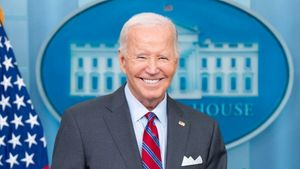JAKARTA - Negotiators closed the regulatory agreement for the carbon market at the United Nations Climate Change Summit (COP26) on Saturday in Glasgow, England.
The deal will unlock trillions of dollars to protect forests, build renewable energy facilities and other projects to combat climate change.
The final agreement adopted by nearly 200 countries will implement Article 6 of the 2015 Paris Agreement.
The agreement allows countries to partially meet their climate targets by purchasing carbon offsets.
Carbon offset is an activity to balance a number of carbon emissions resulting from certain activities by buying carbon credits.
Companies, as well as countries with extensive forests, are pushing for strong deals on carbon markets
The deal is a "Brazil victory" and the country is gearing up to become a "big exporter" of carbon credits, Brazil's Environment Ministry said on social media. The country is home to most of the Amazon forest, and has great potential for building wind and solar power plants.
"This should spur investment and the development of projects that can deliver significant emission reductions," Brazil's chief negotiator Leonardo Cleaver de Athayde told Reuters.
But the countries most vulnerable to climate impacts have signaled concerns over the offsets that might open to abuses that allow bad actors to avoid cutting emissions.
The deal managed to address a series of key points that contributed to the failure of the previous two major climate meetings.
Previously, there was disagreement over taxes on certain carbon trades aimed at funding climate adaptation in poor countries.
Carbon offset trade between countries will not face taxes. The deal saw developing countries succumb to demands from rich countries, including the United States, which objected to the tax levy.
In a separate centralized system for issuing carbon offsets, 5 percent of the proceeds from carbon offsets will be collected to be used as adaptation funds for developing countries.
Under the carbon offset issuance system, two percent of the carbon offsets will be canceled with the aim of increasing overall emission reductions.
Other provisions decide how to pass carbon credits created under the old Kyoto Protocol, the predecessor to the Paris Agreement, into the new offset market system.
Carbon credits represent the right for a company to emit a certain amount of carbon or other greenhouse gas emissions in its industrial processes. One unit of carbon credit is equivalent to a reduction in emissions of 1 tonne of carbon dioxide (CO2). Carbon credits become units traded in the carbon market for carbon offset activities.
The English, Chinese, Japanese, Arabic, and French versions are automatically generated by the AI. So there may still be inaccuracies in translating, please always see Indonesian as our main language. (system supported by DigitalSiber.id)













